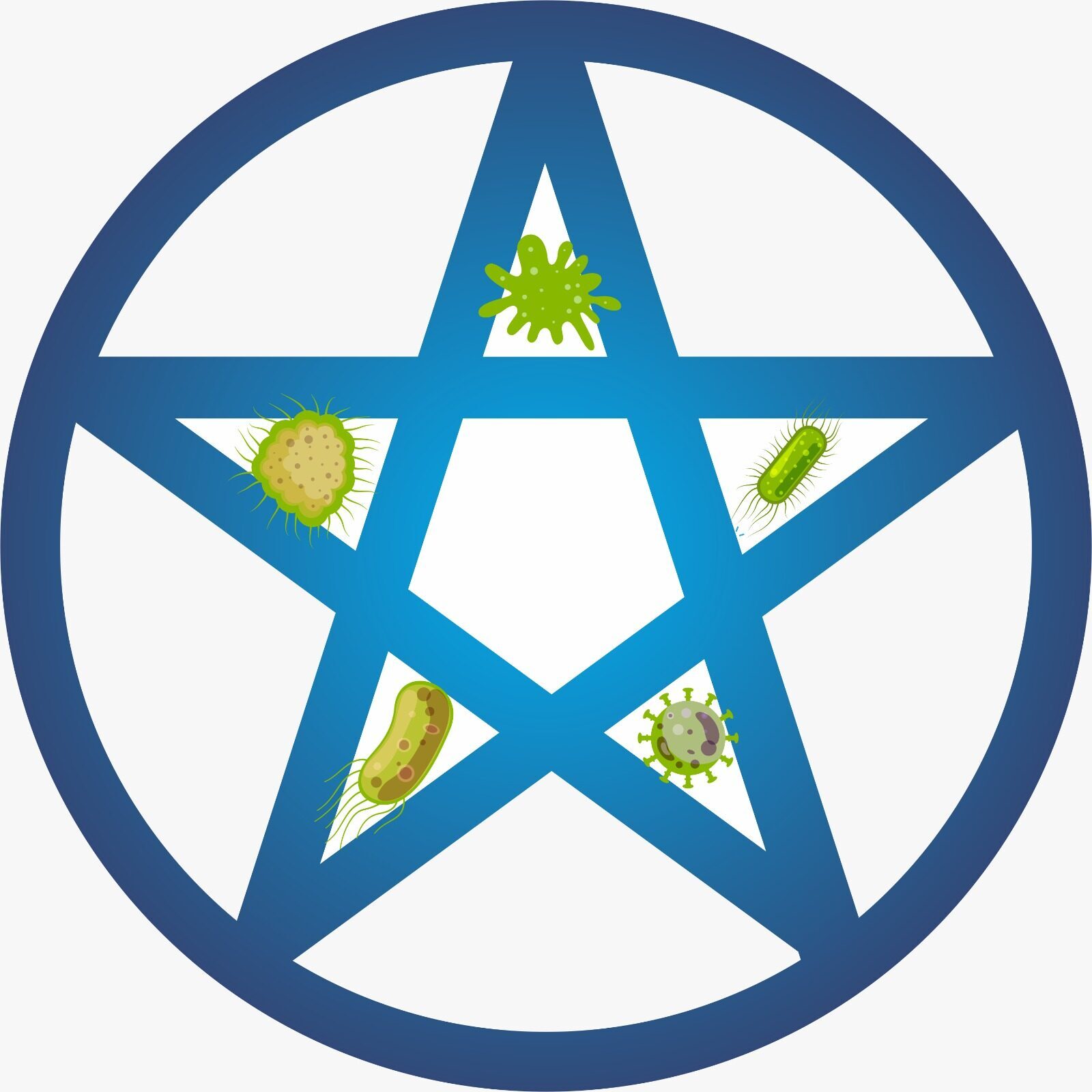Skip to content
References
- Watson JT, Gayer M, Connolly MA. Epidemics after natural disasters emerging infectious disease swww.cdc.gov/eid,Vol13. Emerg Infect Dis. 2007;13(1):1-5. doi: 10.3201/eid1301.060779, PMID 17370508.
- Fernandes A, Zaman MH. The role of biomedical engineering in disaster management in resource-limited settings. Bull World Health Organ. 2012;90(8):631-2. doi: 10.2471/BLT.12.104901, PMID 22893748.
- March G. Natural Disasters and the Impacts on Health report—eird.org. Available from: https://www.eird.org/isdrbiblio/PDF/Natural%20disasters. University of Western Ontario; 2002.
- Jafari N, Shahsanai A, Memarzadeh M, Loghmani A. Prevention of communicable diseases after disaster: a review. J Res Med Sci. 2011;16(7):956-62. PMID 22279466.
- Tripathi P. Flood Disaster in India: an Analysis of trend and Preparedness, Ambedkar University, Delhi. Interdisciplinary Journal of Contemporary Research. 2015;2(4, August-September):2015ISSN : 2393-8358.
- Gautam KP, Van EE, Hoek D. Literature study on environment impact of floods, Delft cluster publication; 2003. p. DCI-233-13.
- Hansell A, Oppenheimer C. Health hazard from volcanic gases: A systematic literature review. Arch Environ Health. 2004;59(12) http://doi/10.1080/00039890409602947:628-39. doi: 10.1080/00039890409602947, PMID 16789471.
- Gudmundsson G, Larsen G. Effect of Volcanic Eruptions on human health in Iceland october. Laeknabladid. 2016;102(10):433-41. doi: 10.17992/lbl.2016.10.101, PMID 27813483.
- Zuskin E, Mustajbegović J, DokoJelinić J, Pucarin J, Cvetković MM, Toksikol A. Effect of volcanic eruption on environment and health,Archives of Industrial Hygiene and Toxicology | Volume 58(4). 2007:479-86. doi: 10.2478/v10004-007-0041-3.
- Casella C. The world’s 10 most devasting volcanic eruptions; 2017. Available from: https://www.australiangeographic.com.au/topics.
- Doocy S, Daniels A, Packer C, Dick A, Kirsch T. The human impact of earthquake: A historical review of events 1980-2009 and systematic literature review, Plos Current Disaster. Available from: http://currents.plos.org/disasters/index.html%3Fp=6639. Vol. 2013; 2013.
- Kalantar Motamedi MH, Sagafinia M, Ebrahimi A, Shams E, Kalantar Motamedi M. Major earthquake of the past decade (2000-2010): A comparative review of various aspects of management. Trauma Mon. 2012;17(1):219-29. doi: 10.5812/traumamon.4519, PMID 24829886.
- Kumbhojkar P. Astrong catastrophic wind; 2019. Available from: https://whatsscience.in/author/pranitaherwadewhatsscience-in/page/3/.
- McElreath D. Bhola Cyclone International disaster; 2020. Available from: https://www.researchgate.net/publication.
- Khalil GM. The catastrophic cyclone of April 1991: it’s Impact on the economy of Bangladesh. Nat Hazards. 1993;8(3):263-81. doi: 10.1007/BF00690911.
- Karande S, Bhatt M, Kelkar A, Kulkarni M, De A, Varaiya A. An observational study to detect leptospirosis in Mumbai, India, 2000. Arch Dis Child. 2003;88(12):1070-5. doi: 10.1136/adc.88.12.1070, PMID 14670771.
- Floret N, Viel JF, Mauny F, Hoen B, Piarroux R. Negligible Risk for epidemics after geophysical disasters. Emerg Infect Dis. 2006;12(4):543-8. doi: 10.3201/eid1204.051569, PMID 16704799.
- Supe A, Khetarpal M, Naik S, Keskar P. Leptospirosis following heavy rains in 2017 in Mumbai: report of large-scale community chemoprophylaxis. Short report. Natl Med J India. 2018;31(1):19-21. doi: 10.4103/0970-258X.243407, PMID 30348917.
- Sidore K, Aljunid S, Kamigaki T, Hammad K, Oshitani H. Preventing and controlling infectious diseases after natural disasters. Available from: https://unu.edu/publications/articles/preventing-and-controlling-infectious-diseases-afternaturaldisasters.html#info.
- Breslauer DN, Maamari RN, Switz NA, Lam WA, Fletcher DA. Mobile phone based clinical microscopy for global health applications. PLOS ONE. 2009;4(7):e6320. doi: 10.1371/journal.pone.0006320, PMID 19623251.
- Rodriguez R, Durán P. Natural holobiome engineering by using native extreme microbiome to counteract the climate change effects. Front Bioeng Biotechnol. 2020;8:568. doi: 10.3389/fbioe.2020.00568, PMID 32582678.
- Kumar S, Dagar V, Khasa Y, Kuhad R. Genetically modified microorganisms (G.M.O.s) for bioremediation. Biotechnol Environ Manag Resour Recov. 2013. doi: 10.1007/978-81-322-0876-1_11.
- Perpetuo E, Souzaand C, Augusto C, Nascimento O. Engineering bacteria for bioremediation progress in molecular and environmental bioengineering- from analysis and modeling to technology applications. Intech Open. doi: 10.5772/19546.
- Tirivangasi HM. Regional disaster risk management strategies for food security: Probing Southern African Development Community channels for influencing national policy. Jamba. 2018;10(1):468. doi: 10.4102/jamba.v10i1.468, PMID 29955261.
- Rodriguez R, Durán P. Natural holobiome engineering by using native extreme microbiome to counteract the climate change effects. Front Bioeng Biotechnol. 2020;8:568. doi: 10.3389/fbioe.2020.00568, PMID 32582678.
- Choudhury M, Verma S, Saha P. Effect of earthquake on the surrounding of environment; an overview. In: Proceedings of the international conference on recent advances in mechanics and materials (ICRAMM-2016); 2016, Burla. p. V:(paper no. RR03).
- Kaur R. Cyclones:cause,types and impacts IJSR. Int J Sci Res. 2015;3(7, July) ISSN No 2277 – 8179.
- Palliyaguru RS, Amaratunga D, Haigh R, R; 2007. Available from: https://scholar.google.co.in/scholar.
- Le Cozannet G, Kervyn M, Russo S, Ifejika Speranza C, Ferrier P, Foumelis M et al. Space-based earth observations for disaster risk management. Surv Geophys. 2020;41(6):1209-35. doi: 10.1007/s10712-020-09586-5.
- Wood L, Boruff B, Smith H. When disaster strikes how communities cope and adapt:a social capital perspective. Social, Capital: Theory, Measurement and Outcomes. ISBN: 978-1-62417-822-1; 2013.
- Kouadio IK, Aljunid S, Kamigaki T, Hammad K, Oshitani H. Infectious diseases following natural disasters: prevention and control measuresExpert. Expert Rev Anti Infect Ther. 2012;10(1):95-104. doi: 10.1586/eri.11.155, PMID 22149618.
- Sur D, Dutta P, Nair GB, Bhattacharya SK. Severe cholera outbreak following floods in a northern district of West Bengal. Indian J Med Res. 2000;112:178-82. PMID 12452126.
- Kondo H, Seo N, Yasuda T, Hasizume M, Koido Y, Ninomiya N et al. Post-flood—infectious diseases in Mozambique. Prehosp Disaster Med. 2002;17(3):126-33. doi: 10.1017/s1049023x00000340, PMID 12627915.
- Ezezika OC, Singer PA. Genetically engineered oil-eating microbes for bioremediation: prospects and regulatory challenges. Technol Soc. 2010;32(4, November):331-5. doi: 10.1016/j.techsoc.2010.10.010.
